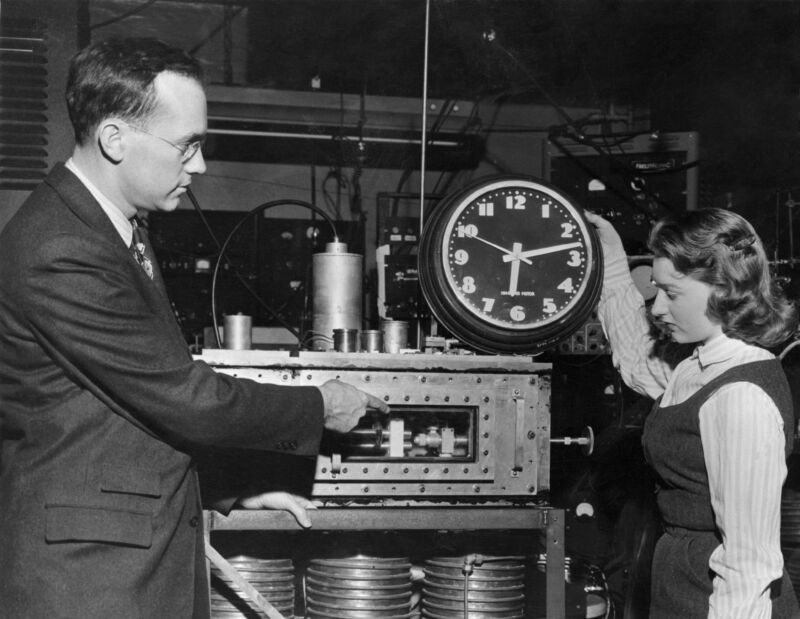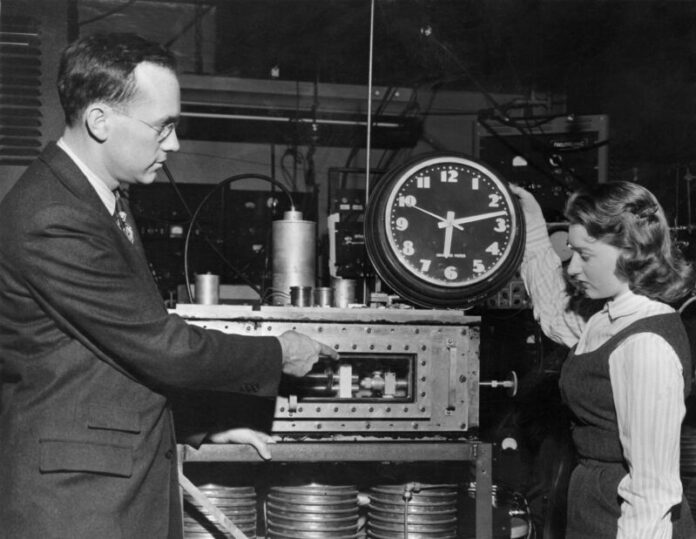
Enlarge / Dr. Charles H. Townes, inventor of the maser, a key component of atomic clocks, illustrates the differences between it and a standard clock. (credit: Getty Images)
One of the leading thinkers on how humans track time has a big, if simple, proposal for dealing with leap seconds: Don't worry about them. Do leap minutes instead, maybe one every half-century or so.
"We all need to relax a little bit," said Judah Levine, leader of the Network Synchronization Project in the Time and Frequency Division at the National Institute of Standards and Technology (NIST), to The New York Times. Leap seconds—when coordinated, near-impeccable atomic time is halted for one second to synchronize with the Earth's comparatively erratic movements—are a big headache, especially to computer technology.
The International Bureau of Weights and Measures (IBWM) has already voted to eliminate leap seconds entirely by 2035, or at least how they are currently implemented. Levine plans to submit a paper outlining a "leap minute," timed to the next World Radiocommunications Conference held by the International Telecommunication Union (ITU). Starting November 20 in Dubai, United Arab Emirates, the world's radio and communications policymakers will debate various measures and standards. The Times suggests Levine's paper may be published after the conference, but awareness of it—including the Times story itself—should make it a point of contention.
Read 6 remaining paragraphs | Comments
Ars Technica - All contentContinue reading/original-link]




